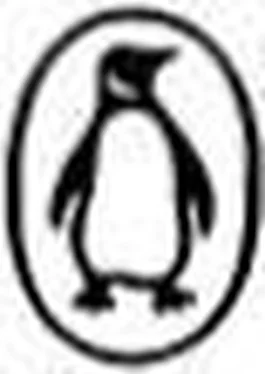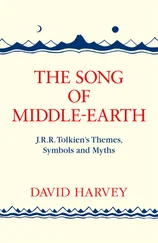Davidson, H. - Gods and Myths of Northern Europe
Здесь есть возможность читать онлайн «Davidson, H. - Gods and Myths of Northern Europe» весь текст электронной книги совершенно бесплатно (целиком полную версию без сокращений). В некоторых случаях можно слушать аудио, скачать через торрент в формате fb2 и присутствует краткое содержание. Жанр: Старинная литература, на английском языке. Описание произведения, (предисловие) а так же отзывы посетителей доступны на портале библиотеки ЛибКат.
- Название:Gods and Myths of Northern Europe
- Автор:
- Жанр:
- Год:неизвестен
- ISBN:нет данных
- Рейтинг книги:5 / 5. Голосов: 1
-
Избранное:Добавить в избранное
- Отзывы:
-
Ваша оценка:
- 100
- 1
- 2
- 3
- 4
- 5
Gods and Myths of Northern Europe: краткое содержание, описание и аннотация
Предлагаем к чтению аннотацию, описание, краткое содержание или предисловие (зависит от того, что написал сам автор книги «Gods and Myths of Northern Europe»). Если вы не нашли необходимую информацию о книге — напишите в комментариях, мы постараемся отыскать её.
Gods and Myths of Northern Europe — читать онлайн бесплатно полную книгу (весь текст) целиком
Ниже представлен текст книги, разбитый по страницам. Система сохранения места последней прочитанной страницы, позволяет с удобством читать онлайн бесплатно книгу «Gods and Myths of Northern Europe», без необходимости каждый раз заново искать на чём Вы остановились. Поставьте закладку, и сможете в любой момент перейти на страницу, на которой закончили чтение.
Интервал:
Закладка:
Unfortunately there are difficulties in the way, and to explain the nature of these something must be said of the history of heathenism in north-western Europe. At the time when Rome was supreme, the Germanic tribes were the barbarians on the outskirts of the Empire, sometimes resisting the Roman armies, sometimes working with them as allies. Rome had considerable influence on their way of life, but in language and in beliefs they seem to have remained largely untouched. When the Empire at last collapsed, the Germanic barbarians, most of them still heathen, pushed forward to overrun the rich lands no longer protected by the Roman armies. The time which we call the Migration period, from about the fourth to the sixth century after Christ, was one of continual movement and restlessness in western Europe. At this time the Angles and Saxons moved westward and took possession of England, bringing with them over the North Sea their heathen beliefs and practices. Elsewhere Franks, Vandals, Alamanni, Ostrogoths, Visigoths, and a score of lesser peoples were striving to find lands on which to settle and some degree of security for themselves and their sons in a bewildering world. As time went on, the independent bands of warriors under their princely leaders became fewer in number. They cancelled each other out, and little settled kingdoms became the order of the day. There was rivalry and strife between these kingdoms, and gradually one absorbed another, many small dynasties vanishing or becoming no more than legends. By the time the great nations emerged, and men thought of Anglo-Saxon England or Merovingian France as established powers, most of the Germanic peoples had given up their heathen beliefs and adopted Christianity.
At the end of the sixth century a little group of missionaries crossed the Channel to bring the Christian faith to Kent. Other Christian teachers were already working in the west of Britain, and before long the temples of the heathen gods were replaced by little churches of wood, brick, and stone, and carved crosses rose everywhere in honour of the Christian God. By A.D. 731 a brilliant Christian scholar in the new monastery of Jarrow in northern England, the man we know as the Venerable Bede, set out to write a book surveying the growth of the Faith from one end of England to the other. Though the heathen religion in Britain was not yet dead, its days were numbered. On the Continent most of the Germanic peoples had already rejected the old gods, with a few exceptions like the Saxons, the Frisians, and the Danes.
In Scandinavia the new Church was much longer gaining a foothold. Not until the tenth and eleventh centuries were the people of Norway converted by those doughty Christian kings, Olaf Tryggvason and Olaf the Holy. These two waged unceasing battle against the heathen gods, smashing their idols, burning their temples, and either driving out their followers or putting them to a painful death in the name of Christ. Some of those driven out settled in Iceland, where there were no kings and no persecution. But even in Iceland the fires of heathenism were dying down, and in the year 1000 the Icelandic Assembly, after a calm appraisal of the situation, decided for Christianity. Denmark too yielded to the persuasion of the missionaries, and when in 1015 Canute the Dane conquered England he was fully prepared to become a pillar of the Church. The Swedes were the most stubborn in their faithfulness to the heathen religion, but by 1164 a Christian bishop ruled in Uppsala, the old stronghold of Odin and Freyr.
Thus we see why we can learn comparatively little about the heathen myths from England and Germany, where Christianity was established early. We have to turn for information to Scandinavia, where a vigorous heathen population flourished for centuries after Augustine sailed for Kent, or to places in the north-west where the Scandinavian settlers left the marks of their influence. In the last days of their heathenism, Viking adventurers from Norway and Sweden were the scourge and terror of the church in Europe. They swooped down on villages, monasteries, and churches in Britain, France, Germany, and Spain. They burned and plundered, they carried off chalices, crucifixes, and jewelled book covers as loot. It must have seemed to the Christians as if these robust sea-robbers would conquer the western world and usher in a new age of darkness. Vikings ruled in the Orkneys and Shetlands, in the Hebrides, Man, and Dublin. They wiped out the community in Columba’s monastery at Iona. In 875 they sacked Lindisfarne, a centre of learning and inspiration renowned through Christendom, and all civilized Europe was shocked and saddened by the news. The few monks who survived massacre wandered for years through the fells with the body of their sainted Abbot Cuthbert, who had made Lindisfarne a place of spiritual power, until they found a resting-place for his remains in Durham. Paris and Hamburg had been plundered in 845; Cadiz and Seville suffered the same fate. In Ireland the wife of a Viking chief, a heathen seeress, spoke her prophecies from the holy altar of Clonmacnoise.
The Viking adventurers were indomitable. They reached the eastern shore of America; they pushed down the Dnieper to Byzantium, where the Christian emperor valued their physical prowess sufficiently to enrol them in his special Varangian guard. They refused to be intimidated by ghosts of the past or the proud civilization of the south, but had the effrontery to cut runic inscriptions on ancient tombs like Maeshowe in Orkney, and on classical monuments like the marble lion of the Piraeus. No haven seemed safe from their longships, and no coast town or village from their favourite weapons: the long sword, the axe, and the firebrand. By 870 they were masters of northern and eastern England. Only the resolution of one young prince, in indifferent health and without powerful allies, kept them from engulfing southern England also, and destroying what three centuries of Christian culture had built. It is hardly surprising that alone among English rulers that prince, Alfred, bears the title Great.
These are the people to whom we turn for our northern myths. They were a formidable body of men, all the more so because they cannot be condemned as a collection of rogues and sadists, blind to all but material values. Of course there were worthless rascals among them, and they could be brutal enough, as the monks at Lindisfarne knew; but their leaders were in many cases men of culture, discrimination, and wit, with love of a good story and a neat jest. They loved fine art and craftsmanship, and treasured their good ships and splendid swords for their beauty as well as their utility in war. A quick-witted poet could win his way in their world as well as a brilliant swordsman, and the man who was both at the same time, like Egill Skallagrimsson the Icelander, or Earl Ragnald of Orkney, had the world at his feet. They were shrewd traders too, with a wily instinct for commerce not unworthy of a modern business magnate. Not a few who sowed their wild oats and built up a promising little fortune a-viking in the western seas grew up to be wise rulers, fathers of fine families, and valuable members of the community; some even came to be saints. From such lively, alert minds one would expect a rich and vigorous mythology, and they do not disappoint us.
2. The Sources of our Knowledge
Northern heathenism, that is, the pre-Christian beliefs of the Germanic peoples and the Scandinavians, came to an end in the eleventh century. There were two periods when it presented a threat to Europe: the first was at the time of the fall of Rome, when the Germanic tribes were overrunning the west, and the second was in the ninth and tenth centuries, when the Vikings were a great power and a menace to Christian civilization. In each case Christianity triumphed, and the hostile bands of invaders were converted to the faith. Since they themselves had no desire to make converts, they were at a serious disadvantage, and it was only a matter of time before the new religion replaced the old.
Читать дальшеИнтервал:
Закладка:
Похожие книги на «Gods and Myths of Northern Europe»
Представляем Вашему вниманию похожие книги на «Gods and Myths of Northern Europe» списком для выбора. Мы отобрали схожую по названию и смыслу литературу в надежде предоставить читателям больше вариантов отыскать новые, интересные, ещё непрочитанные произведения.
Обсуждение, отзывы о книге «Gods and Myths of Northern Europe» и просто собственные мнения читателей. Оставьте ваши комментарии, напишите, что Вы думаете о произведении, его смысле или главных героях. Укажите что конкретно понравилось, а что нет, и почему Вы так считаете.












